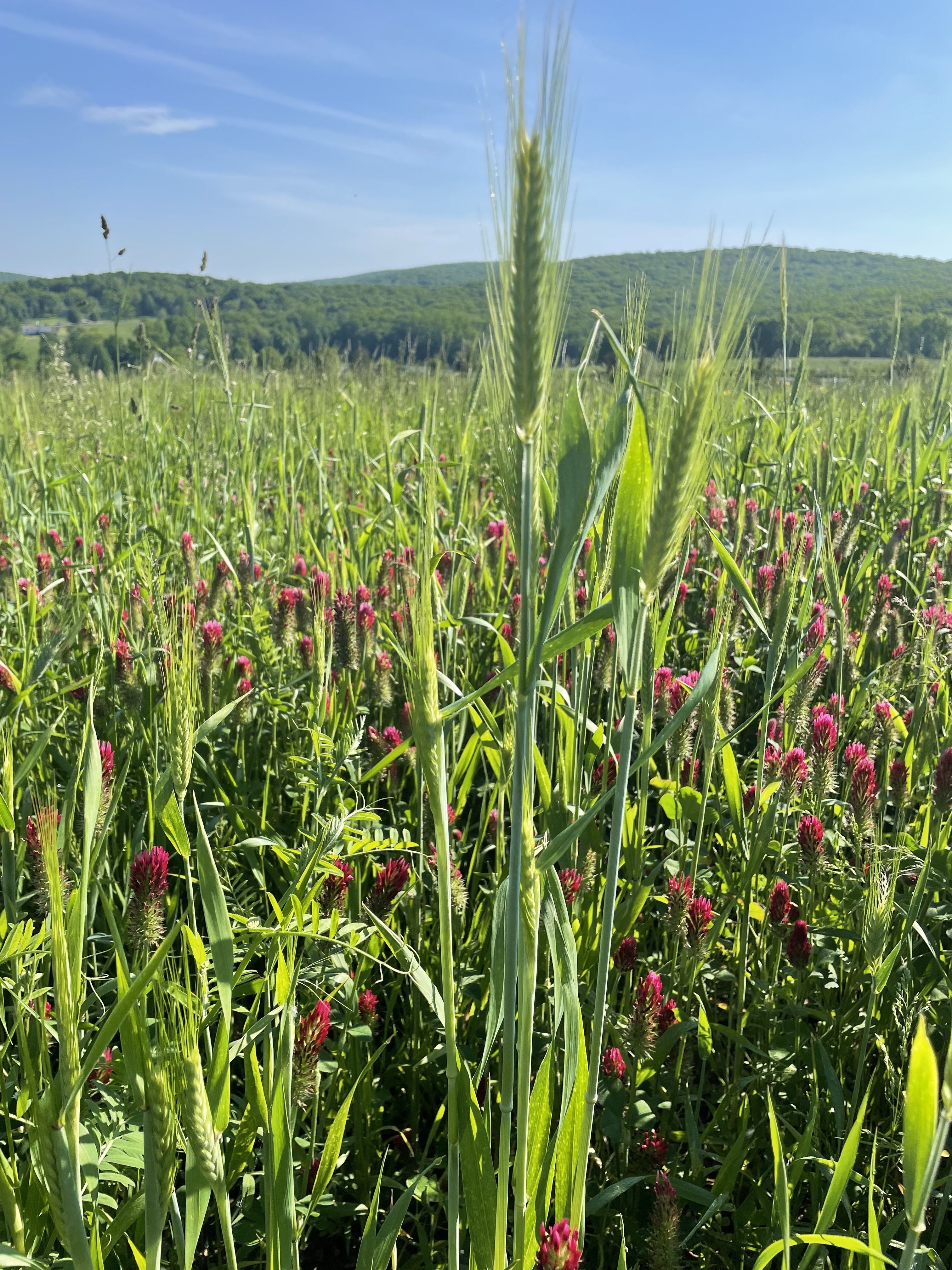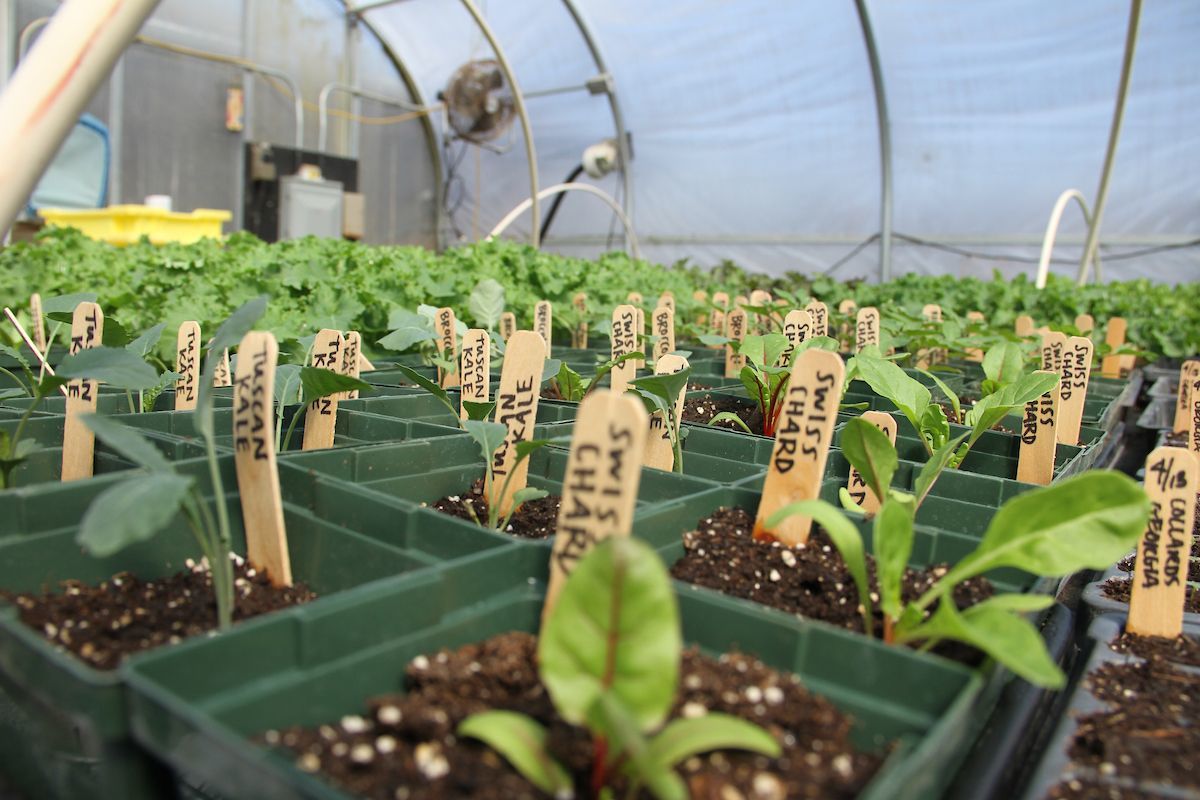
Notes from the Field: Glynwood’s pasture restoration project
This is the fourth in a series of articles about pasture restoration at Glynwood. The other articles were published in July, August, September of 2021.
On Memorial Day I mowed down the cool season annual mix that I planted last September. It is always bittersweet to knock down a lush stand of cover crop; the showy stand of triticale and crimson clover in this mix was no exception. I followed with two passes of a shallow disk harrow to mix the plant residue into the soil to encourage decomposition of the cover crop and prepare the soil surface for another round of seeding.
A week later, with a good seed bed established and soil temperature reaching an ideal 65 degrees, I seeded another diverse warm season annual pasture mix. I am particularly excited for the high proportion of deeply tap-rooted sunflower and sunn hemp in this mix, which also includes cowpea, buckwheat, millet, and turnip. This diverse mix of crops will contribute to the pasture restoration by keeping nutrients cycling in the soil and promoting surface water infiltration with the added benefits of attracting pollinators and producing high quality grazing for our livestock by late July or early August.
I already see the benefits of the soil and plant disturbance created over these past two years of contour tillage and planting cover crops. There is already far less surface water pooling at the surface and running off the field after heavy rainfalls than in past years. Even though the soil was exposed in the newly planted field there was virtually no evidence of surface runoff after an inch of rain fell in thirty minutes the following day.
This is likely due to a combination of factors. One of the many benefits of diverse cover cropping is that it helps make the soil more like a sponge, so that it can soak up more water falling on the land. In addition, I decided to do all the machine work following the contours of the land. A common soil conservation practice in many parts of the country, farming on contour (with the slope of the land rather than up/down the slope) is a contemporary expression of just one of the many Indigenous agriculture practices used worldwide to manage extremes of water—too much and too little—that make food production challenging in many parts of the world. At the end of the summer I plan to complete the first phase of pasture renovation by mowing and harrowing the field to plant the final seeding of a cool season perennial forage mix that will serve as a permanent pasture.
The success of this practice has Glynwood’s land management team thinking together about other practices—both old and new—that could help us manage extremes of rainfall in Middle Field and other parts of the farm. These include the construction of berms and swales to slow down, direct and store surface water flows as well as adding perennial trees and shrubs on Middle Field. The latter could also provide new marketable crops, produce browse and create shade for livestock, and soak up and store more carbon from the atmosphere both above and below ground.
I am merely a temporary visitor on this land, and am part of this land at the same time. Of all the things I think about and do at Glynwood, this Middle Field project is especially exciting because of what it has the potential to lead to. As the Glynwood land management team uses its holistic goal and vision to imagine how we use this land and grow food in the face of climate change, Middle Field may be a model for how to use various methods and tools to promote resilience and repair more broadly. Through disturbance and the establishment of creative systems to meet our goals and needs, we can design and act with true resilience.

